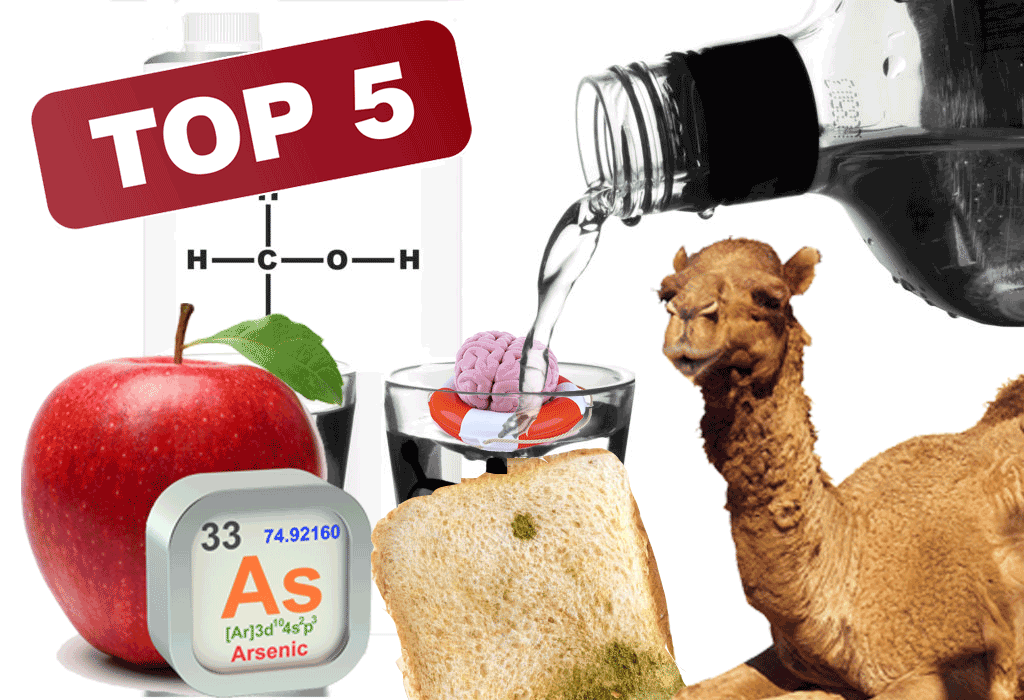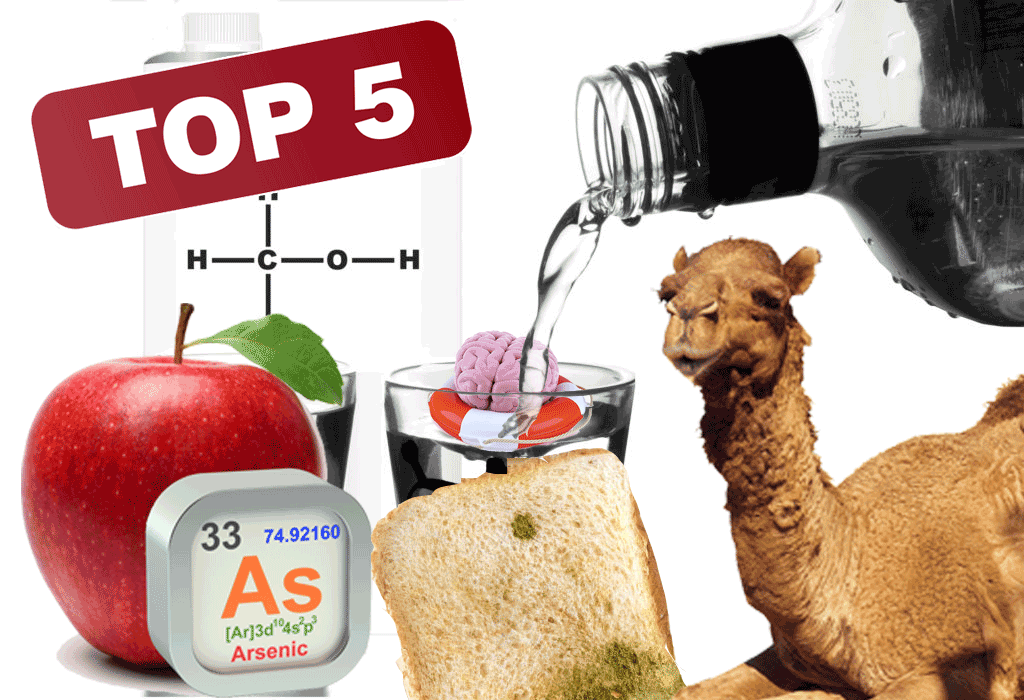
Welcome to 2020 – and what a time it’s going to be! Following the celebrations of ‘The Most Wonderful Time of the Year,’ you’ll be forgiven for experiencing ‘The Most Hungover Time of the (New) Year.’ Let’s face it – who did not overindulge during the holidays? So if you need a few minutes of peace and quiet to nurse that aching head, there’s no better reason to sequester yourself away with some of the Best of 2019 articles, selected by our Berkshire Boffins to inform, entertain, and delight you.
And on the subject of ‘celebratory overindulgence,’ as we crunched our website data we couldn’t help but notice that two of the five most popular articles highlighted alcoholic beverages in one way or another.
Indeed, having nervously sipped our May article on Toxic Tipples you – our most discerning of readers – went on to order another round at the bar, elegantly quaffing our November article on Euphoric Alchemy and better living through chemistry.
At other times, you resolutely set aside all things alcoholic and focused instead on food. In January, your interest was in the problem of school lunch contamination (was the holiday break from school just that bit too long?) Our #3 most viewed article explored the ways in which the adoption of strong HACCP protocols can help minimize the dangers of institutional food. In June, our #4 article probed the sometimes dark history of apple growing, examining how the nation’s most beloved of fruity snacks is linked to arsenic, along with the ways in which we as consumers can protect ourselves from heavy metal toxicity. And finally, also in June, we published an update to our earlier research on camel’s milk. This final article in the Top 5 Best Loved category expanded on the purported health benefits of the beverage and laid a few myths to rest.
We are thrilled that you have enjoyed our articles again this year and look forward to bringing you more of this material moving forward. The developments and breakthroughs facilitated by our nation’s cleanrooms are fascinatingly diverse and we are honored to be a part of such an inherently ingenious industry. At Berkshire, our mission is to offer our support and expertise to a profession and a community that is changing the world, one innovation at a time.
Here’s to a fun review of ‘The Best of 2019,’ and to embracing the immense promise of the year ahead!
1. The Euphoric Alchemy of Botanical Beverages: Better Living Through Chemistry?
For many of us, a glass of wine at the end of the day or a few beers on a Friday evening act as a line of demarcation: on the one side, lie work, stress, and responsibilities; and on the other lie home, relaxation, and self-care. And given that an alcoholic beverage is so much more than the sum of its physical parts, who can blame those who enjoy what it represents almost as much as the buzz it offers. So it is with some interest that we learned of a shift that is taking place. Whether it’s current enthusiasm for all things wellness-based – from activated charcoal to vitamin IV drips (we couldn’t find an example for ‘Z’) – or that consumers wiser than this writer now accept that a celebratory ushering in of the weekend is just not worth the subsequent hangover, the fact is that people are looking to other beverages to mark the start of downtime.
But let’s be honest for a moment. Does a seltzer water with a twist of cranberry really cut it? And just how many glasses of orange juice can you really down in an evening before your internal organs need a floatation device? And for those of us without a medical reason to abstain from alcohol, the utter lack of a buzz from juices, fizzy waters, or sodas is, frankly, a buzz killer. So what’s a person to do? Fortunately perhaps a solution may be at hand – have you ever tried Kin? As our #1 article of 2019, we’d love to re-introduce you to a whole new kind of celebration in a glass that doesn’t bring with it the next day’s inevitable hangover…
2. How HACCP Curbs Contamination in the School Lunch System: No Such Thing as a Free Lunch?
In the face of the inevitable annual flurry of resolutions in the New Year surrounding health, diet, and exercise, we at Berkshire are going against the flow and providing you, our diet-beleaguered readers, with respite from the onslaught of accusatory finger wagging. Far be it from us to promulgate the miserable ‘New Year, New You’ message that so well serves the Diet-Industrial-Complex with its ego-withering dictats on how much (little?) to eat and how often (too often?) to hit the gym. In fact, to stubbornly underscore our point, let’s take a few moments to reminisce on our favorite foods. Let’s pause to recall the yeasty-cheesy aromatics of deep-dish pizza. Or how about the salty sweetness of a burger slathered in ketchup? And let’s not forget the insanely appetizing notes of French fries crisping in the fryer. Memories of these childhood favorites transport us back to a time in which we spared nary a thought for our waistlines nor our cholesterol counts. An era when middle-age spread was not yet ‘a thing,’ gravity had not begun to exert its evil downward pull on our various body parts, and we were not yet on the track to paying for our cardiologist’s Caribbean pied à terre…
Ah yes, those were the days. When food was pleasure and lunch was just…lunch. No strings, no worries. But there was, as we now recall, also a dark side. The school lunch menu in particular was peppered with culinary landmines, the likes of which could explode at any time. ‘Options’ such as the plate of sadly wilting salad greens with that dressing, the origin of which you could never quite determine. Or the baleful dish of boiled vegetables, swimming in condensed steam and prolonged simmering. Or the utter disaster that is the average school cafeteria meatloaf, pooling in grease and almost indistinguishable from a slab of epoxied sawdust. Yes, maybe a return to those halcyon days of institutionalized cuisine is not so desirable after all. But if you are still craving a school lunch favorite, check out our #2 top article here…
3. Arsenic as the ‘Protector of Apples’: Heavy Metal Contamination.
In 1944, director Frank Capra released his dark comedy adaptation of Joseph Kesselring’s play, Arsenic and Old Lace. Starring Cary Grant and Raymond Massey, the film told the story of a family in which two family matriarchs take it upon themselves to poison lonely and aged men with apparently nothing to live for. Seeing their actions as a mercy, the old ladies dose a glass of elderberry wine with a combination of strychnine, cyanide, and arsenic, ultimately enlisting a third family member to dispose of the bodies in the cellar. Debuting at the end of a very dark period in human history, the Warner Bros movie was well received, providing as it did a strong dose of humor in extraordinarily challenging times.
But why arsenic? Perhaps because of its long pedigree as a poison of choice. In Victorian England, for example, the element was relatively ubiquitous and found in everything from candles and wallpaper, to fabrics and artificial flower wreaths with which ‘ladies of high society’ would adorn their hair. It was also regarded as the preeminent murder weapon for those wishing to rid themselves of a troublesome relative: with commonly occurring symptoms such as vomiting and abdominal pain and death ensuing hours after contact, the poisoner could not easily be identified. So with that in mind, how is it true that arsenic is still to be found within the contemporary food chain? If you are concerned about the safety of your snacks (and who isn’t???), head over to our #3 best loved article of 2019 and find out all there is to learn (almost!) about arsenic contamination in our food supply.
4. Could Methanol Lurk in your Favorite Cocktail? Bootleg Booze & Toxic Tipples
We’ve said it before but we’ll say it again, when it comes to de-stressing from the week, many folks like to kick back with a glass of wine, a chilled beer, or a creative cocktail. And unless it is medically contraindicated, drinking in moderation can be a pleasant and social experience. Assuming, of course, that the alcohol in question is free from tampering or contamination. However, recent reports from as far afield as the Dominican Republic, India, and China reveal a disturbing increase in bootleg booze, counterfeit cocktails, and toxic tipples. And then there’s also the matter of Moutai – a potent, fiery spirit once available only to China’s elite – which is sweeping the nation, despite reportedly tasting like the love-child of paint stripper and kerosene.
With a distilling workshop in the eponymous town within the Guizhou province dating back potentially to 1599, this daunting beverage first came to prominence during the Ming dynasty. Inasmuch as ‘champagne’ is authentic only if it derives from the Champagne region of France, genuine Moutai is distilled only in this one small town in the Southwest of China and, after the final distillation, is stored for three or four years in earthenware jars. A good Maotai is judged on color (bright glossiness and perfect transparency), aroma (from sweet and smooth to floral and fruity), and taste (full bodied and rich) and as with Scotch or Bourbon, the experience of savoring Maotai exists along a spectrum. And some connoisseurs do not even taste the drink. Auctioneers Christie’s of London recently highlighted held a collector’s sale where commemoration Moatai was offered for between 28,000 and 50,000 Chinese Yuan, or $3983 and $7112, for a 500ml bottle.
Too rich for your taste? We understand! But what could be the attraction of this potent drink and what is the ‘contamination angle’? To review our #4 most read article, take a closer look here…
5. Camel Milk as Cure-All? An Update…
Occasionally a topic comes onto our radar that is on first glance so unlikely that it just has to be worthy of further investigation. Back in July last year, one such subject emerged when we brought you news of a new potential superfood. No, it was not the now somewhat famous article on milking cockroaches, but an analysis of newly emerging data suggesting that camels’ milk could be the next option in the dairy aisle. In ‘Could Camel Creamer Be the Next Big Thing to Customize your Cup of Joe?’ we looked at the emerging business of dromedary dairies, the environmental impacts of camel husbandry, and our concerns regarding the potential for contamination and its impact on consumers’ health. What we didn’t expect, however, is for new data to emerge so rapidly suggesting that camels’ milk is not only a potential rival to bovine milk in terms of nutrition but that it could additionally be of therapeutic interest. Or, to put it more succinctly, we did not anticipate that it could be leveraged in the treatment of two of today’s most prevalent and feared conditions: cancer and diabetes. Intrigued? Read on to find out more on our 5th most popular article of 2019!

